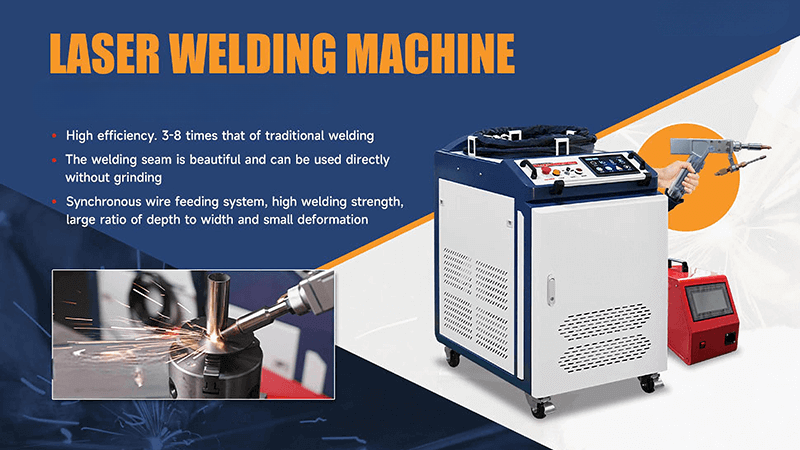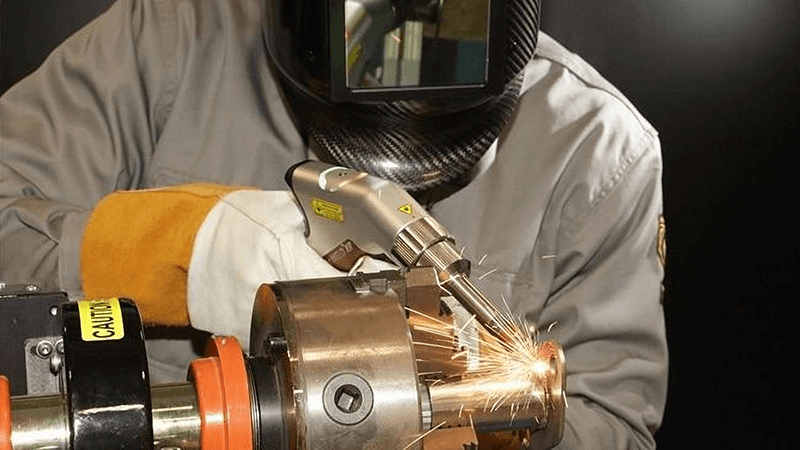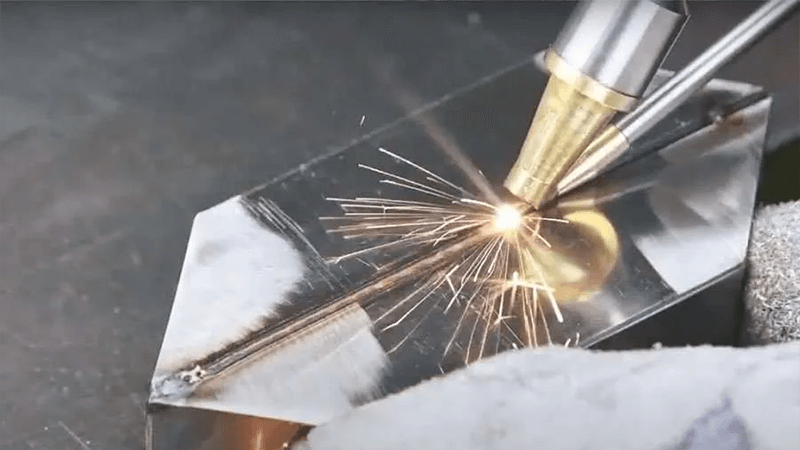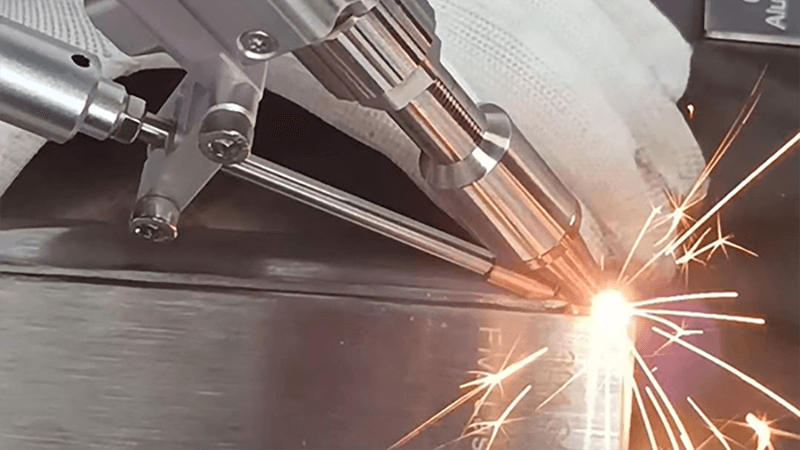When choosing a welding style, many people get stuck between MIG, STICK, and TIG. Each has loyal fans, but there’s a better way that often gets overlooked: fiber laser welding.
Fiber laser welding machines offer more precision, speed, and cleaner seams than MIG, STICK, or TIG. They are the future for anyone serious about top-quality welds, especially on stainless steel and aluminum.
If you’ve ever battled messy welds or slow production using MIG or TIG, you’ll want to keep reading. Let me explain why fiber laser welding is the game-changer I trust, and why Kirin Laser clients are making the switch.

What is the best welding style?
Many fabricators swear by what they know. But sticking to old methods can slow you down. If you need speed, accuracy, and a clean finish, you should reconsider your options.
The best welding style depends on your materials and goals, but fiber laser welding outperforms MIG, STICK, and TIG on stainless steel and aluminum in both speed and quality.
Why fiber laser welding leads the pack
At Kirin Laser, we see customers switch from MIG, STICK, or TIG to fiber laser every day. Let’s break it down.
Precision
Fiber laser welding delivers pinpoint accuracy. This is crucial when working with thin metals or tight tolerances. MIG and STICK create more spatter. TIG is cleaner, but slower. Fiber laser gives smooth, consistent seams without the cleanup.
| Style | Spatter | Finish Quality | Precision |
|---|---|---|---|
| MIG | High | Medium | Low |
| STICK | High | Low | Low |
| TIG | Low | High | Medium-High |
| Fiber Laser | None | Very High | Very High |
Speed
Time is money. MIG and STICK are fast, but the welds often need grinding or polishing1. TIG is slow but cleaner2. Fiber laser welding3 combines speed with a polished seam, cutting post-processing time.
Cost-efficiency
Fiber laser welding saves labor costs on cleanup and rework. While the machine investment is higher up front, the long-term savings add up. No more hours wasted polishing welds or fixing mistakes.

Why choose MIG over TIG?
Many people lean toward MIG for ease and speed. I used to do the same. But sticking with what’s familiar can hold back your production.
People choose MIG over TIG because it is faster and easier to learn. But fiber laser welding provides both speed and quality without the trade-offs.
Why fiber laser beats MIG in real life
MIG works great for thicker materials. But when you want clean, precise welds on stainless or aluminum, fiber laser wins. One of our customers made custom stainless frames with MIG4. Their welds needed grinding and polishing to look right. Once they upgraded to fiber laser, they doubled output with no extra polishing.
Seam quality
MIG produces more spatter. That means cleanup. Fiber laser welds are so clean they often need no post-processing.
| Style | Weld Cleanup Needed | Output Speed | Best For |
|---|---|---|---|
| MIG | High | Fast | Thicker steel, quick jobs |
| Fiber Laser | Very Low | Very Fast | Stainless, aluminum, precision work |
Learning curve
MIG is easy to pick up. That’s why many shops start there. Fiber laser is also easy with the right training. At Kirin Laser, we help clients get started fast with fiber laser5 machines.

Why is TIG welding preferred?
TIG has been the go-to for clean, precise welds. I relied on TIG for years. But it’s slow, and the learning curve is steep. There’s a smarter option today.
TIG welding is preferred for precision and clean seams. But fiber laser welding gives even better precision, with faster speed and less skill needed.
TIG vs. fiber laser: the facts
TIG welding6 lets you control the arc and filler well. But it’s slow, and keeping consistent quality takes serious skill. Fiber laser machines are consistent and fast, with precision baked in. They make even complex joints easier.
Control and consistency
TIG gives the welder control, but that also means room for error. Fiber laser machines offer repeatable quality. Every weld is as clean as the last.
| Style | Speed | Operator Skill Required | Consistency |
|---|---|---|---|
| TIG | Slow | High | Medium |
| Fiber Laser | Very Fast | Medium | High |
Finish quality
With TIG, the finish is good but still may need light polishing. Fiber laser welds often don’t need polishing at all. The seams look great right off the machine.

Is MIG or TIG welding better for cars?
When working on cars, people argue over MIG and TIG. Both have their place. But let me share why fiber laser is changing the game.
MIG is better for thick steel on cars, TIG is better for aluminum and precision. But fiber laser welding outshines both for body panels and precision work on auto parts.
Auto welding: why fiber laser wins
Cars today use many materials. Aluminum is common for weight savings. Stainless is used for custom parts. MIG7 handles thick steel well. TIG8 does finer work, but slowly. Fiber laser combines speed, precision, and clean seams for modern car builds.
Applications
| Style | Best For | Car Use |
|---|---|---|
| MIG | Thick steel | Frames, brackets |
| TIG | Thin metals | Exhausts, custom parts |
| Fiber Laser | Thin to medium metals | Body panels, custom parts, trim |
Real-world success
We helped a custom auto shop switch from TIG to fiber laser9 for aluminum body work. Their welds looked better, and they finished jobs faster. No more hours spent on seam cleanup.

Conclusion
When people ask if MIG, STICK, or TIG is better, I tell them to look beyond the old options. Fiber laser welding10 brings speed, precision, and clean seams together. At Kirin Laser, we’ve seen customers transform their output and quality overnight. If you want to work smarter, not harder, fiber laser welding is the answer. Let’s talk about how it can help your business too.
-
Learn about the reasons behind the need for post-weld finishing and how it affects the overall quality of welds. ↩
-
Discover the trade-offs of TIG welding to make informed decisions for your welding projects. ↩
-
Explore the advantages of Fiber laser welding to understand how it can enhance efficiency and quality in your projects. ↩
-
Discover the drawbacks of MIG welding and why fiber laser might be a better choice for certain applications. ↩
-
Explore this link to understand how fiber laser technology can enhance welding efficiency and quality, especially for precision work. ↩
-
Learn about TIG welding's unique control and skill requirements, and how it stacks up against other methods like fiber laser. ↩
-
Learn about MIG welding's strengths and weaknesses compared to other methods, essential for understanding its role in car production. ↩
-
Discover the challenges of TIG welding, especially in speed and efficiency, to better appreciate alternative methods like fiber laser. ↩
-
Explore the benefits of fiber laser welding, including speed and precision, which are crucial for modern automotive manufacturing. ↩
-
Find the best laser welding machine and welding solutions from Kirin Laser, clicking this link to get your needs. ↩





